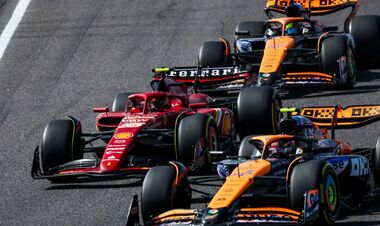“What did Boss Ferrari’s words actually mean about “99% of new details”?”, – WRITE: Sport.ua
Before the start of the 2025 season, the team not only significantly modernized the car, which, according to the Italian press, made a car for about 0.4 seconds faster than last year’s version, but also made one of the most humble personnel changes in modern formula-1-seven-time world champion Lewis Hamilton joined Skuderia, replacing Carlos Sainz.
The first stage of the season will take place from March 14 to March 16 at the Australian Grand Prix, where Ferrari will be able to estimate the real speed of SF-25 in combat. Before that, the car will take winter tests in Bahrain from February 26 to February 28, which will be an important step in checking all technical solutions and adaptation of pilots to the machine and new requirements of the season.
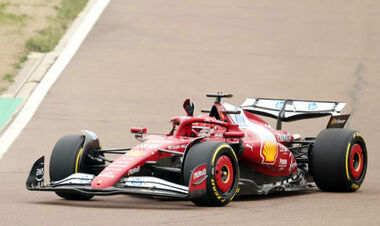
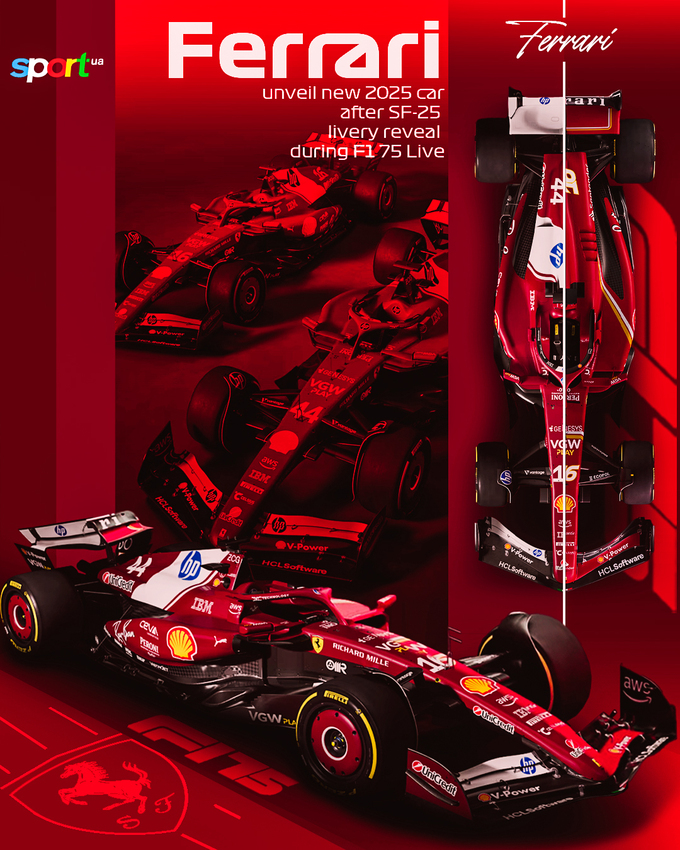
Elongated wheelbase
One of the important features of the SF-25 was the extension of the wheelbase by shifting the front wheels forward. This creates a larger space between the wheel and the side pontoons, which helps to better control the air flow and reduce its turbulent effect on the front edge of the floor. Hamilton’s transition may have influenced this change, as the British has previously criticized the Mercedes’s short wheelbase.
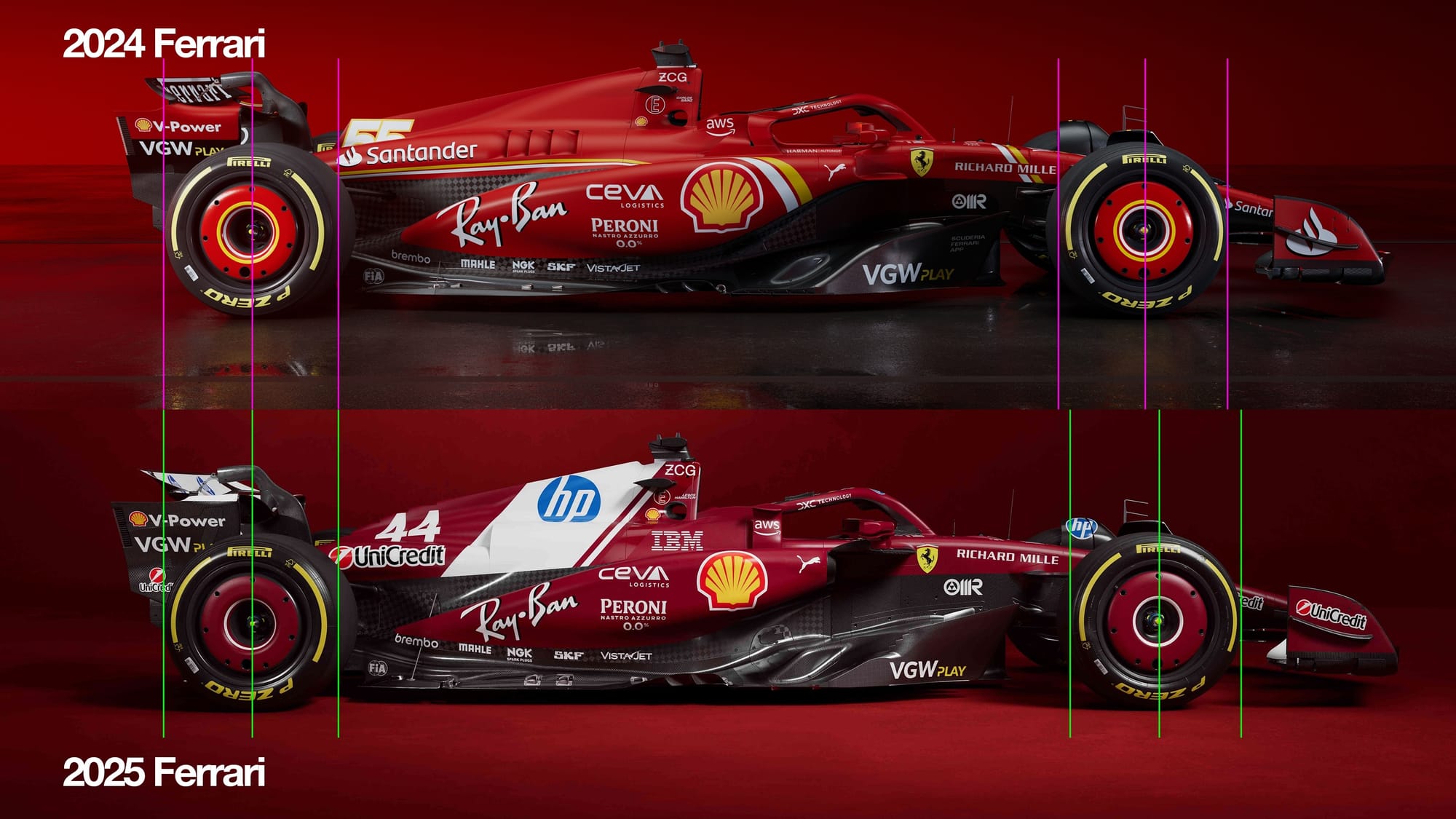
Front suspension
The transition to the front suspension of the Pull-RO is one of the most bold changes in SF-25. While most teams remain on the Push-Rod, Skuderia decided to change the philosophy of the front of the bopper (the green line in the photo below).
The main purpose of such a solution is to improve aerodynamic efficiency. Due to the low location of the levers, it is possible to direct more air under the chassis, which has a positive effect on the bottom of the car and the overall level of the clamping force.
In 2024, McLaren also went through dramatic changes in the front suspension, introducing a system with a high level of anti-detention. Ferrari seems to have chosen a more balanced option – at all over -risk, but for clear aerodynamic purposes.
The upper cross lever does not have extreme immersion settings, as in Mclaren and Red Bull, but uses a slightly more conservative approach (the blue line in the photo below). The reasons for this technical choice can be different and related to both aerodynamics and mechanics. The new configuration and location of the levers allow you to create a channel of air flow to leaks and new input openings of the radiator. In addition, the new suspension thrust is not only thinner, but also directs the flow of air to the central part of the car.
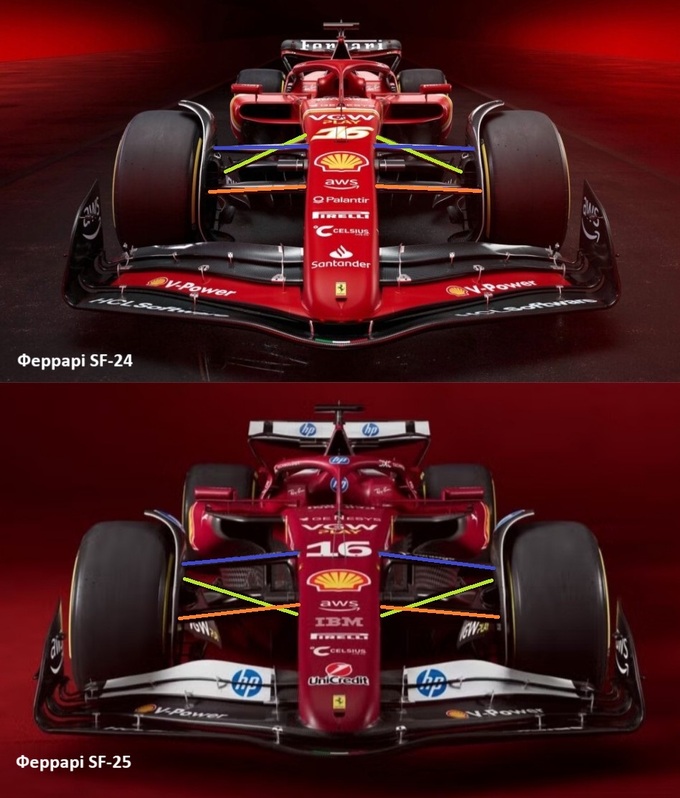
Front wing
Unlike the suspension, the front wing SF-25 has not undergone significant changes. The general concept with the slot between the nasal part and the first element of the wing remained. This allows you to direct the additional air flow under the car, which has a positive effect on the balance of the machine.
It is worth noting that the nasal part of SF-25 looks wider and more square than competitors. This may be due to the rigid FIIA crash tests or Ferrari’s own philosophy about the front balance.
Rear suspension
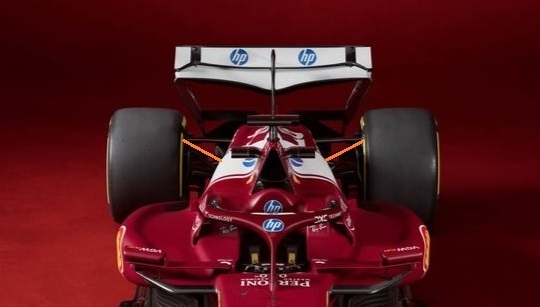
As last season, Ferrari retained the rear suspension according to the Pull-Rod scheme, continuing to follow the proven approach. One of the noticeable nuances is below the location of the upper front lever, which should increase the effect of Anti-Lift, helping to maintain the stability of the back of the car during braking (orange line).
Although changes are rather an evolutionary development of the previous concept than cardinal innovations, the team has introduced a number of point updates that can significantly affect the behavior of the machine. However, many details remain out of the frame, and the full picture can only be drawn after the first test races.
Updating lateral pontons and cooling system
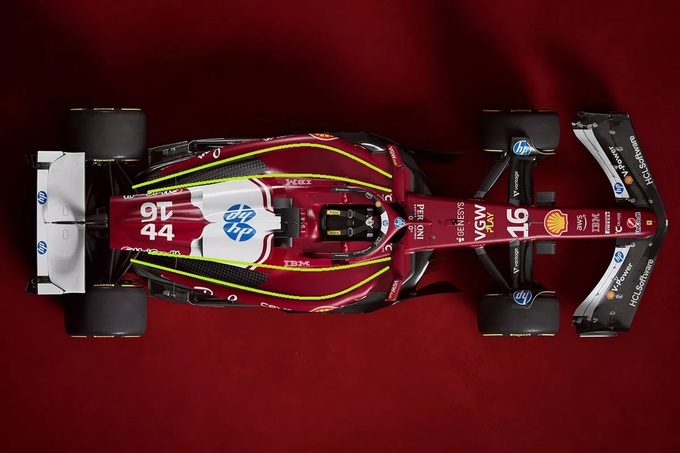
The sides are now shorter and more compact to create more space for the radiators of the power unit and all auxiliary systems such as hydraulics. To maintain the efficiency and, most importantly, the reliability, the envelopes of the enrico gualtieri power units have transferred some cooling elements to the engine cover. This change is noticeable because of the new lid shape, which is now more elongated and has fewer edges than SF-24. The movement of the components is also justified by the presence of some ventilation holes in the back of the engine cover and near the driver’s racing number.
Ferrari significantly increased the inlet of the radiators in the SF-25. This may be due to the fact that the team expects a busy fight in a dense peloton and wants to avoid problems with overheating. In the lateral part, the concept of inversion air entrance, which appeared in Ferrara in 2022, is preserved (marked with yellow lines in the photo from above). This solution helps to direct the air flow along the upper surface of the pontons, reducing its unwanted perturbations. The result is improving the flow of flows in the central part of the car, which has a positive effect on the efficiency of the beam of the wing and diffuser, especially at low rides.
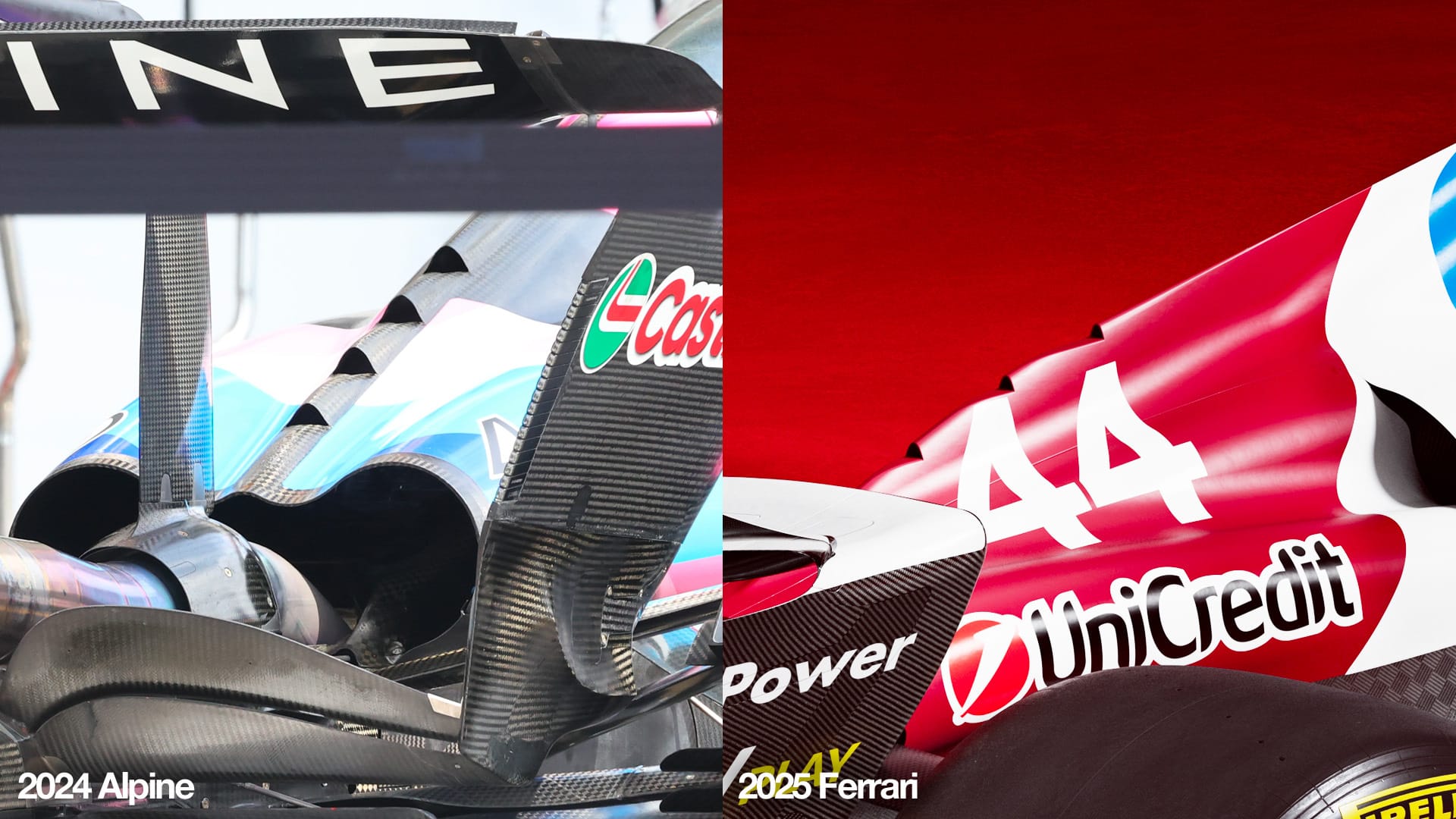
In addition, additional ventilation openings appeared on the engine cover. Similar solution was used by Alpine and Aston Martin last year, and Ferrari decided to go the same way to better control the engine temperature.
The bottom of the car
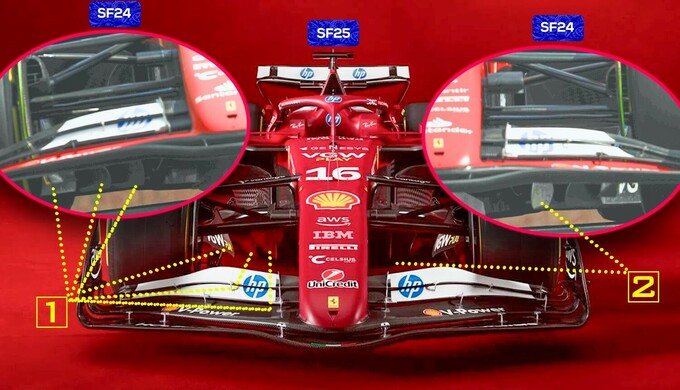 Sutton Images The bottom of SF-25 has undoubtedly undergone significant changes, in particular through the transition to the traction front suspension, which affected the nature of the air flow under the car. At first glance, you can see changes in the location of the walls of the Venturi channels (1), especially the inner wall (2), which can affect the efficiency of the clamping force. However, for a more detailed analysis of this element, you will have to wait for pre -season tests when clearer photos will appear.
Sutton Images The bottom of SF-25 has undoubtedly undergone significant changes, in particular through the transition to the traction front suspension, which affected the nature of the air flow under the car. At first glance, you can see changes in the location of the walls of the Venturi channels (1), especially the inner wall (2), which can affect the efficiency of the clamping force. However, for a more detailed analysis of this element, you will have to wait for pre -season tests when clearer photos will appear.

Conclusion
SF-25 is a significant step forward for Ferrari, combining evolutionary solutions with important technical changes. The transition to a new front suspension, the lengthening of the wheelbase and the refinement of aerodynamics testify to the serious intentions of the team to challenge McLaren, which will try to protect their title for the first time since 1999. However, the real competitiveness of the car can only be evaluated after tests in Bahrain. If all the innovations are effective, Ferrari can become the champions rival in the fight for the title in 2025.
